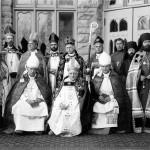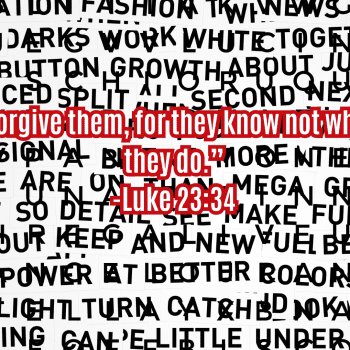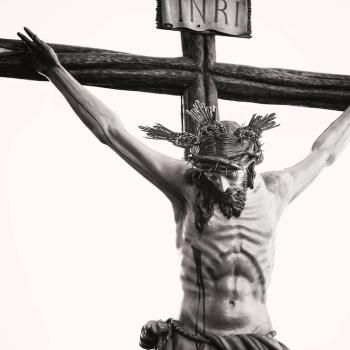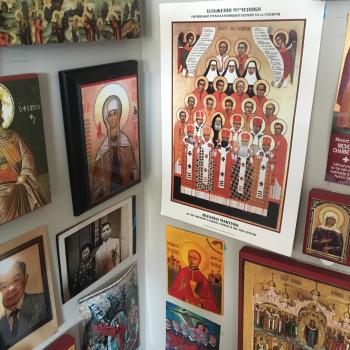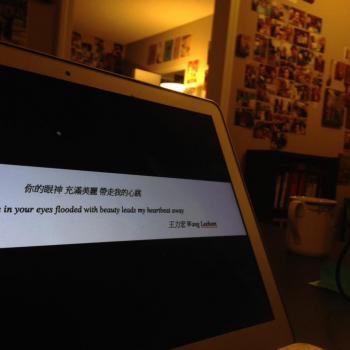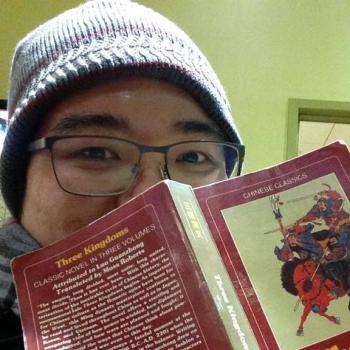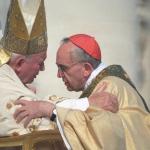![Funeral for Schema-archimandrite Anastasy (Popov) - by rИерей Максим Массалитин (16185355@N00/2226919732) [CC-BY-SA 2.0 (https://creativecommons.org/licenses/by-sa/2.0/deed.en)], via Flickr](https://wp-media.patheos.com/blogs/sites/721/2015/12/Orthodox_funeral_service-1024x681.jpg)
I am not Eastern Catholic. [This changed on the Vigil of Ss Peter and Paul 2016.]
Held at what I think is the best kept ecclesial secret in Richmond, British Columbia – Richmond Eastern Catholic Church (ECCR) – the event was titled ‘Courageous Mourning: Traditional Wisdom for Modern Grief,’ a presentation from the parish’s Chinese Canadian pastor, Fr Richard Soo, SJ.
The event came about because Fr Soo and I were talking one day about how many people in the modern age like to sweep grief under the rug and pretend like death is ok. While it might be sexy to contemplate the ‘being-toward-death’ as Heidegger did (Fr Soo likes to quote Heidegger as an interlocutor, and he used this line to open his talk), Fr Soo pointed out that a modern passive acceptance of sickness and death has sold us out to the forces of darkness without acknowledging how terrible things like death, sickness, and the loss of relationships really are. He envisioned this talk as a community education session about a more ancient way of dealing with death and grieving.
I also learned many things from helping to organize this talk.
Organizing and promoting the event itself was very easy despite my not being Eastern Catholic. ECCR’s organizational machine is very small, which makes it very easy to manage. Practically speaking, all that really happened was that Fr Soo sent me a rough one-page outline of what he wanted to say, and I started a Facebook event.
But I got the sense that Fr Soo was out to educate me as well; whether he consciously intended to do that or not is a different matter, of course. Jesuit that he is, the lessons had to be experiential.
Looking back, I learned a lot from this event because it produced some very interesting encounters with the Protestant friends I invited, whether or not they actually showed up. Following the critical literature revising secularization theory, I am (of course) using ‘Protestant’ to include friends considering themselves ‘secular’ and ‘spiritual but not religious,’ thanks be to Asad, Milbank, Taylor, Gregory, Pfau, and Anidjar among others (like Wuthnow). Fr Soo was very supportive of this, as he had grown up the Chinese Presbyterian Church when it was still in Vancouver’s Chinatown.
I quickly discovered that it’s impossible to sell an Eastern Catholic talk as if it were a mainline Protestant, evangelical Protestant, or secular (*cough* Protestant!) event. In his outline, Fr Soo mentioned how the Byzantine liturgy for funerals was a way of allowing people who are grieving to be able to enter into a dialogue between themselves and God. Dialogue, I thought, now there’s a sexy word to get my Protestant friends to come, and I advertised the event as if Fr Soo were going to lead a dialogue for those attending about their grief. I reasoned, after all, that evangelicals were really into ‘lament’ nowadays, and this kind of thing might float their boat.
Upon seeing this, Fr Soo gently clarified his intentions. While it was true that we were going to have some dialogue – and some dialogue did occur during the question/answer period, as well as over tea in the parish hall – Fr Soo explained to me gently but firmly that this was not going to be a dialogue, and that he didn’t want to disappoint people who might have come for that if we were going to advertise it as such (although he has nothing against having a dialogue or against subjective experience; remember, he is a Jesuit). For this particular talk, he was going to lecture, and worse, he was going to simply walk people who came through the Ukrainian Greek Catholic Church’s funeral service, the Order of Burial. He would lead us through chants translated into English from Old Church Slavonic and Ukrainian. He would intersperse this with theological commentary. The question and answer period would be brief. Any conversation that might happen could take place over tea and goodies in the church hall.
Revising the advertisement threw my Protestant friends for a loop. It’s quickly becoming one of my observations that Eastern Catholics gleefully see one of their primary tasks as weirding out Protestants (again, in the inclusive ‘secular’ sense). What does it even mean to call a Catholic ‘Eastern’? Would the liturgy be similar to a Catholic mass? Wouldn’t the unfamiliarity of it all be a turnoff? I found that the more I tried to reassure my (inclusively) Protestant friends, the deeper of a hole I dug for myself. How do you explain to secular people that Christianity is not only a Western religion? How do you explain to a Chinese Protestant that they’re actually Western because the ‘West’ in Christianity refers to Rome and its discontents? How do you explain to people who have come to expect their individual stories and subjective experiences to be taken with therapeutic seriousness that a dialogue can be primal without you having to share every detail of your individual story in a talking circle? And how do you communicate to Protestants who genuinely wanted this event to draw a crowd through slick advertising that Fr Soo’s postion was that ‘if only one person comes, it will be enough’?
We ended up having about 20-25 people show up, which for ECCR is a crowd. To my surprise, I was greeted by an evangelical Protestant who had discovered the event just that day and had decided to show up; he had already gotten himself into a conversation with Fr Soo, who seemed surprised that after all of that Protestant ambivalence, a Protestant who had never heard of the Eastern Catholic Church would show up. My guest seemed surprised with himself too; as we slipped into a pew (with apologies to the Orthodox, as some Eastern Catholics do have pews), he saw the iconostas (the wall of icons in front of the altar) up at the front and whispered to me, ‘Justin, if it weren’t for you, I would never have come to a space like this.’
It turned out that about half of the crowd had seen the event promoted on Facebook. Most of that half were evangelical Protestants who had grown up in Chinese evangelical congregations. Most had never given a thought to the Eastern church, much less Eastern Catholicism. The other half were mostly Roman Catholics, and as it turned out, a good many of them were also Chinese. Most of them too had never given a thought to the Eastern church; one later appeared bewildered that there was a picture of Pope Francis in the church hall. ‘Are you Catholic?’ he asked. ‘But you are Orthodox. But you are Catholic. What is this?’
When the time came, Fr Soo just dove right in. There he was up front, saying that ‘we all know’ what grieving is like in a modern age – ‘we all know’ certain songs, certain catch phrases, certain pious lines that we use to make death feel not as bad, and ‘as we all know,’ Heidegger talked about ‘being-unto-death.’ He then just started using words like ‘Eastern,’ ‘Byzantine,’ ‘Orthodox,’ and ‘Slavic,’ as if everybody just knew what they were. On a PowerPoint slideshow, he showed pictures of icons and the funeral liturgy and talked about the people in the pictures (both the icons and the priests) as if those were his friends. At one point, he referred to a Ukrainian Catholic priest and his children, because of course it would be normal that Catholic priests should be married. I don’t know whether Fr Soo intended to do this, but what I was struck by was the overwhelming sense that he knew that he was normal, as one would naturally be as a Chinese Canadian Byzantine Rite Jesuit pastoring a Ukrainian Greek Catholic parish. I don’t know if the feeling was shared, but I could literally sense the palpable bewilderment in the room. We all know, we were being told. No, we don’t, I could feel the response begin, and then, wait, do I?
And then he started to sing.
Making PowerPoint slides in the evangelical lyrical fashion is not among Fr Soo’s strong suits. As he told us to sing along, we squinted, trying to make out the teeny-tiny words that he had scanned to put onto the slideshow. But there were two Ukrainian Canadian regular attendees sitting in front of us. It turned out that what Fr Soo was chanting was a litany – or as Eastern Catholics would call it, the ekteny of peace – a series of petitions to God, to which the response was simply, ‘Lord, have mercy,’ chanted in one tone. Tension gave way to bemusement, and bemusement to immersion, as the ekteny was long, with the simple response asking God to have mercy.
While not being able to see the lyrics would have been a disaster in any evangelical (or Catholic) praise-and-worship session, it turned out that it didn’t matter that we couldn’t see Fr Soo’s slides, as long as we could hear him – and we could. Like a literature professor, he ploughed on ahead, chanting lines and then stopping to comment, repeating certain lines with added emphasis and extra commentary.
At this point, people in the room had become fully immersed in the moment. Fr Soo started commenting on how certain lines from the liturgy required you to chant out not that the person who had died had a life worth celebrating, but that their ‘transgressions, voluntary and involuntary’ against God and their fellow human beings would require merciful treatment. The liturgy scripted lines to chant about how this person, whom we may have just seen just that day, had been taken from us and was no more, that this was horrible, that a relationship had been sundered. There was a moment to kiss the dead person in an open casket, to send them on their way because they are gone, and when the burial happens, there isn’t an attempt to cover up the grave with grass, as if to put the added emphasis on how this person that you were just with is now in this spot on the ground, dead and gone.
In the middle of this, Fr Soo said something that made all 20-25 heads spin at the same time. I paraphrase, but he said something to the effect of – It is possible to say these things because you know you are being held by God. It is possible to feel grief, to not have to sweep this all under the rug, because God has got you. What he was saying was reversing a tradition of Protestant wisdom, the clichéd notion that if there is a God, then either he allows death in his sovereignty (which brings up all sorts of questions of theodicy, or why a good sovereign God would promote evil) or that he will eventually raise the dead who are only asleep, or technically, reposed (so why grieve?). Fr Soo emphatically rejected this, saying that it’s in the liturgy, especially in the Troparia for the Reposed, that the soul opens to God and God to the self to speak the truth about the horror of this moment of sundered love and the knowledge that both the reposed and the living ‘bear the brands of transgressions.’ He got excited as he declared that this was something that made his life easier as a priest – that he didn’t have to tell lies or give platitudes or talk about why God allowed all of this, because the liturgy brings this raw grief out into the open. He said that this helped community life too, because the liturgy didn’t happen once, but there were times for liturgical grieving three, nine, and forty days after the death – a way for communities to acknowledge that there was a death without it getting awkward, as everything that is supposed to be unspoken has already been spoken. The best part was that all of this came with the refrain, ‘Blessed are you, O Lord, teach me Your statutes’ – meaning that all of this stuff about grief, sin, transgression, and imperfection came from an objective place. There was more than one licensed Chinese Protestant counseling therapist in the room that night; I could swear that I heard them give several grunts of affirmation.
Fr Soo then talked about the passage of the community from this raw grief to the recognition of the resurrection beginning in the Ekteny, again chanting and commenting the whole way through. The liturgy, it turns out, is not just about the soul’s cry of grief to God; it is also about God’s answer to the soul’s cry of grief. The themes continue about sin, but there are now theological responses emphasizing forgiveness:
God of spirits and of all flesh, You trampled death, You made the devil powerless, and You gave life to Your world. Now, O Lord, to the soul(s) of Your servant(s), ____, who has/have fallen asleep, grant rest in a place of light, a place of verdure, and a place of tranquility, from which pain, sorrow and mourning have fled. As the good and loving God, forgive every sin of thought, world or deed he/she/they has/have committed. There is no one who will live and will not sin, for You alone are sinless. Your justice is everlasting justice and Your word is truth.
As the funeral progresses, the refrains increasingly emphasize that ‘God is wonderful in his saints, the God of Israel.’ There is a sense that both the living and the reposed will participate in this divine victory, together with the martyrs and those who have gone before in forgiveness in the hope of the resurrection.
The resurrection – that’s where this service is going. The very poignant moment of burial, repeated every Great Week (‘Holy Week’ for the Roman Catholics) when the priest will declare over all the graves, ‘Christos voskres! Christ is risen!’ In fact, there’s a section in the service that Fr Soo talked about at length called ‘Eternal Memory,’ which he kept emphasizing does not mean, ‘We’ll remember this person forever because they’re gone,’ but that they had joined the saints in eternity, which would give them an eternal memory. Here, again, the experiential normalcy of the resurrection could be seen as jarring for a Protestant sensibility; its reality doesn’t have to be proven or defended, as it’s just assumed. Perhaps this was why the Protestants who attended, and those who wanted to attend and have been waiting for so long for this blog post as my ‘notes’ on the event, were so intrigued by the whole thing. It was as if Fr Soo was putting legs on everything they had learned to understand at a cognitive level.
What I learned from this event is that it is impossible to explain Eastern Catholicsm to my Protestant friends – liberal, evangelical, secular – because the only way to teach about Eastern Catholicism is to throw you in at the deep end and give you a few commentary hints about how to swim. The initial bewilderment is part of the educational process. You don’t explain Eastern Catholicism. You don’t even experience it. You get thrown into an encounter.
As I am posting this late on December 8, 2015, this particular Roman Catholic Solemnity of the Immaculate Conception is especially important because Pope Francis – with whom Eastern Catholics are indeed in communion – is kicking off a ‘Year of Mercy.’ (In fact, it might be even more appropriate to post this late because Eastern Christians celebrate the Feast of the Conception by St Anne of the Most Holy Theotokos on the ninth.) In a time when the world is being torn apart by ideologically-driven violence fueled by an out-of-control market for arms dealers, it’s Eastern Christians from Ukraine to Syria, Greece to Iraq, Libya and Egypt – whether Eastern Catholic, Eastern Orthodox, Oriental Orthodox, or Church of the East – who are reminding us in the words of the Ukrainian Greek Catholic Church’s Patriarch in Kyiv, His Beatitude Sviatoslav Shevchuk, that what is fueling all of this violence is fundamentally a ‘war of disinformation.’ Patriarch Sviatoslav was, of course, the Ukrainian Greek Catholic Bishop of Buenos Aires during a time that overlapped with Jorge Mario Cardinal Bergoglio, SJ, as the Roman Catholic archbishop. If the Kievan Patriarch is talking about a ‘war of disinformation’ and Pope Francis wants a ‘Year of Mercy’ to call on the church to work for peace, you can bet that the two Argentinian colleagues are working together.
If I am learning anything from these two Jesuits – Pope Francis and Fr Richard Soo – as the Year of Mercy rolls around, it’s that a war of disinformation cannot be combatted merely by correct information. Ideology, as Slavoj Žižek has repeatedly taught us, works at the level of the primal subconscious. A war of disinformation can only fought by the posture and act of mercy, an openness to encounter with God and one’s fellow person. That posture, Fr Soo reminds us, requires courage in the modern world because it requires us to stop with the platitudes and clichés where we accept death and darkness as a reality. To have that reminder as a talk structured as a liturgical service with commentary, in turn, fulfills what Patriarch Sviatoslav outlined in a pastoral letter close to the beginning of his election in 2011: the ‘Vibrant Parish’ as a place where the Word of God and the Divine Liturgy feed the people as a ‘church of communities’ to be able to live as the church in the world, to be the encounter mitigating against disinformation. To encounter 20-25 people in one night – why, yes, for this ‘Vibrant Parish’ thing to work, that really is a crowd, which is no wonder Fr Soo wouldn’t have minded if only one person showed up. It’s probably also why it didn’t matter that much that we couldn’t see the words on the screen: we were not there to encounter words and face a screen, but to let the hearing and giving of words be the way through which our faces turn toward each other.
In turn, it’s probably no accident that Pope Francis that the icon he chose as he opened the Holy Door in Rome for the Year of Mercy was the Ukrainian icon, ‘Doors of Mercy.’ Among many things, he might be asking Western Christians – Catholics, Protestants, seculars – to encounter their Eastern Christian brothers and sisters, some of whom might even be Catholic, because simply put, it’s mercy that’s the emergency measure to courageously fight a modern war of disinformation, denial, platitudes, and clichés, to engage in a mourning that is truly primal that yields a hope that is worth believing. To put words into Fr Soo’s mouth, Move over, Heidegger, because as we all know, Christos voskres.
NOTE: For some reason, it seems like a good idea to point out here at the end that Fr Soo served as a hieromonk (a priest and a monk) at St Elias’ Ukrainian Catholic Church in Brompton, Ontario. That parish, founded and still pastored by Fr Roman Galadza, is considered just about the gold standard of what Byzantine Catholic liturgy should be. I am starting to get the sense that ECCR’s understanding of the ‘Vibrant Parish’ draws from that parish’s practice. In fact, the version of the Order of Burial that Fr Soo talked us through was compiled by Fr Galadza for use at St Elias. It could be argued that Patriarch Sviatoslav thinks so too: while the church building unfortunately burned down in 2014, the Patriarch has promised to be the one who will dedicate the next church building.


